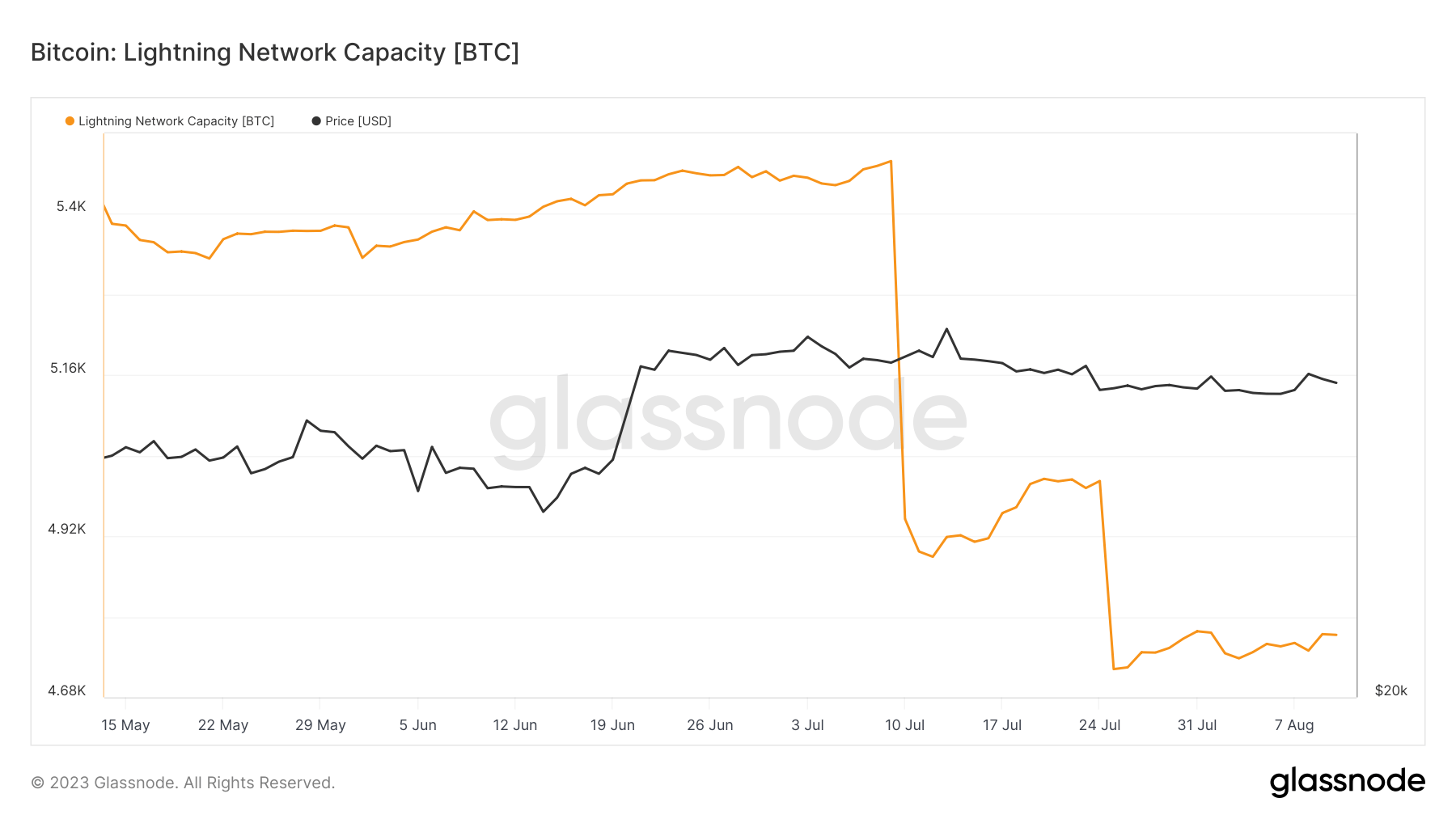Lightning network capacity decreases while number of channels grows
The Lightning Network is a Layer-2 solution designed to address Bitcoin transactions’ scalability and speed issues. It creates off-chain payment channels that allow users to conduct transactions almost instantly and at a fraction of the cost compared to traditional on-chain methods.
By enabling multiple transactions to occur off-chain and only recording the final balance on the main blockchain, it can alleviate congestion and reduces fees, making microtransactions more viable and enhancing the overall efficiency of the Bitcoin network.
The growth of the Lightning Network can indicate more people are using Bitcoin for everyday transactions, a sign of wider cryptocurrency adoption. Changes in the Lightning Network can also reflect shifts in market sentiment — a sudden increase in capacity could indicate a bullish sentiment as more users seek access to quick and cheap Bitcoin transactions, and vice versa.
Lightning Network capacity refers to the total amount of Bitcoin transacting within the network at any given time. A decrease in capacity could hinder the network’s ability to process many transactions. According to Glassnode, the Lightning Network’s capacity dropped significantly between July and August, decreasing by almost 13% in the past 30 days.
This decline has brought the capacity back to levels recorded in December 2022.

The number of channels on the Lightning Network grew by 3% in the same period.
Channels are the fundamental building blocks of the Lightning Network. They are private, off-chain pathways that enable two parties to transact without broadcasting to the blockchain. An increase in channels indicates more transaction pathways, potentially enhancing the network’s efficiency. This growth suggests expanding the network’s infrastructure, allowing more users to participate.

One potential reason for these conflicting trends could be establishing more channels holding smaller amounts of Bitcoin. This might indicate a more distributed network with users preferring to open their channels rather than relying on larger, centralized ones. While this can be seen as a move towards decentralization, the reduced capacity might also suggest that larger players are withdrawing their Bitcoin from the network, possibly due to market uncertainties or a shift in investment strategies.
The post Lightning network capacity decreases while number of channels grows appeared first on CryptoSlate.
Credit: Source link


Comments are closed.